Who hasn’t had a binge of eggplant parmesan? You might remember this Sunday dish at Grandma’s or Mom’s lunch. Perhaps it is still a dish that you usually prepare when you want to give yourself a moment of taste and tradition.
Surely eggplant parmigiana is an iconic dish of Italian cuisine, renowned for its rich flavor and its comforting texture. In particular, it is associated with the Campanian and Sicilian traditions. Naples has made a cult of it, and even in Sicily you can find really delicious eggplant parmigiana dishes.
Let’s see step-by-step how to cook an excellent eggplant parmigiana starting from the origins of the dish.

How to prepare eggplant parmigiana: the mysorious origins of the dish
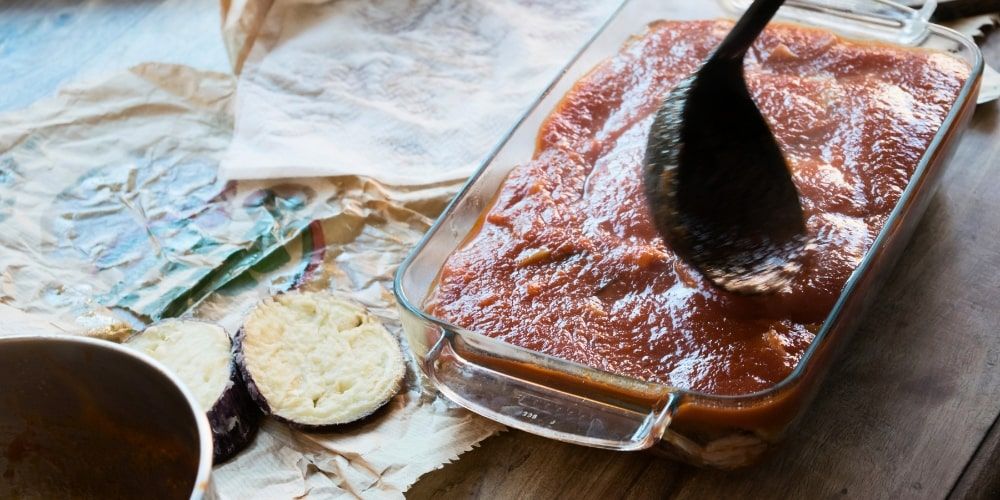
Although today it is closely associated with the culinary tradition of Southern Italy, in particular of Campania and Sicily, the origins of eggplant parmigiana are shrouded in mystery, with various regions claiming paternity.
As mentioned just above, it is a traditional dish that has been passed down through the centuries of Italian cuisine.
Some historians suggest that the term "parmigiana" does not derive from Parmigiano cheese, as many might think, but rather from the Sicilian term "parmiciana", which refers to the wooden slats of the shutters, superimposed just like the eggplant layers in the dish. In short, a complicated lineage, which goes back many centuries.
So let’s not hesitate any longer and let’s get to know the ingredients for the traditional recipe.
Visit the surroundings of Palermo and taste the excellent cuisineEggplant parmigiana: ingredients for 4 people
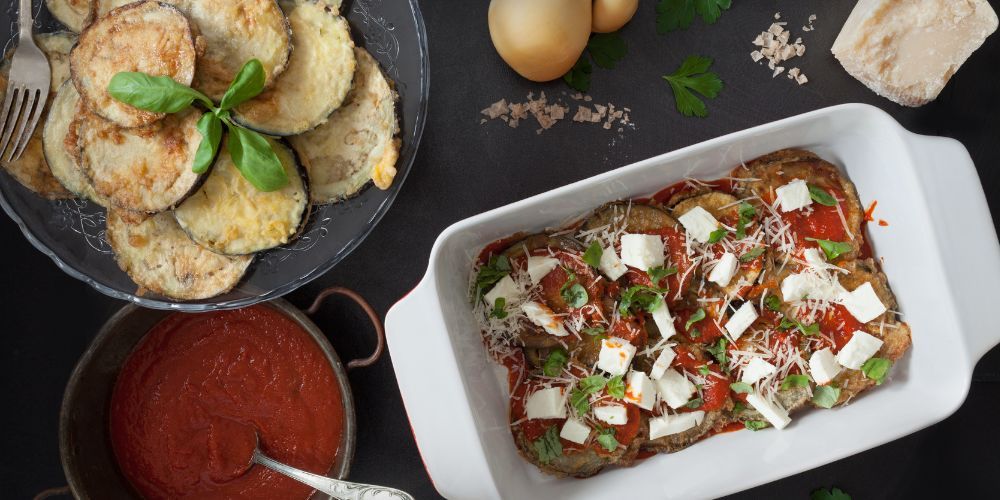
After having deepened the history of eggplant parmigiana, we proceed with the preparation of the necessary ingredients to cook it by the traditional recipe.
To make a traditional eggplant parmesan for 4 people, you will need the following ingredients:
• 3-4 medium eggplants, sliced lengthwise
• Olive oil, for frying
• 400g of tomato puree
• 2 garlic cloves, minced
• Fresh basil, q.b.
• 250g mozzarella, preferably buffalo mozzarella, cut into cubes
• 100g Parmigiano Reggiano, grated
• Salt and pepper, just enough.
The step-by-step procedure
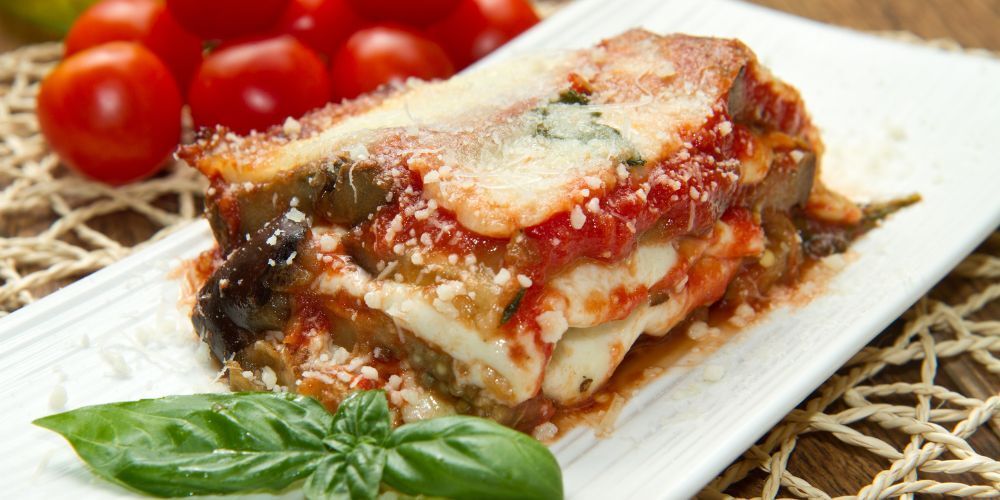
Here we come to the recipe procedure. Follow the steps indicated to prepare an excellent eggplant parmigiana.
Let’s start from the preparation of eggplants.
Cut the eggplant into slices about 1 cm thick.
Put the eggplant slices in a colander and sprinkle with coarse salt. Leave them like this for about 30 minutes: this process is used to lose excess water and make eggplants more digestible.
After 30 minutes, rinse the eggplant slices under running water and gently dry them with a clean cloth.
Let’s now pass to the cooking of the eggplant.
First, heat a grill or a non-stick pan. Then lightly brush the eggplant slices with olive oil.
Cook the eggplant slices on the grill or in the pan until they are soft and slightly golden on both sides. This process can take about 2-3 minutes for each side.
Now we come to the preparation of tomato sauce.
Heat a little olive oil in a pot over medium heat. Add the whole clove of garlic and fry lightly. Pour the tomato puree into the pot and add some fresh basil leaves.
Let the sauce cook over medium-low heat for about 15-20 minutes, stirring occasionally. Add salt and black pepper to taste.
One of the decisive moments of the recipe: the assembly of parmigiana:
Take a baking tray and lightly grease the bottom with a little tomato sauce. Place a layer of eggplant slices over the sauce.
Cover the eggplant slices with a little tomato sauce, then add a few pieces of mozzarella cut into cubes and a sprinkling of grated parmesan cheese.
Repeat this process until the ingredients run out, making alternate layers of eggplant, tomato sauce, mozzarella and parmesan. The last layer must be tomato sauce, parmesan cheese and a few slices of mozzarella to make the surface more creamy.
Cooking:
Bake the Parmigiana in a preheated oven at 180 ºC for about 30-40 minutes, or until the surface is golden and crunchy. Once cooked, let the parmigiana rest for a few minutes before serving. Garnish with fresh basil leaves.
Comparing eggplant parmigiane: differences between Sicilian the Neapolitan

As mentioned in the previous paragraphs, tradition has it that the recipe for eggplant parmigiana dates back to Sicilian and Neapolitan origins. According to history (not officially confirmed), the oldest is the Sicilian one. But without getting into the discussion, let's focus on the differences in preparation.
Sicilian eggplant parmigiana features layers of fried eggplant, interspersed with tomato sauce, cheese, basil and often hard-boiled eggs. The eggplant is usually thinly sliced, fried and then dried to remove excess oil. The tomato sauce is often prepared with fresh tomatoes, garlic, basil and extra virgin olive oil. The cheese used can vary, but ricotta salata or caciocavallo are common choices.
Neapolitan eggplant parmigiana, for its part, tends to be thicker and more compact. The eggplant is grilled rather than fried, adding a smoky flavor to the dish. The tomato sauce is often richer and thicker, adding basil, garlic and often fresh ricotta or mozzarella. The layers are thicker than in the Sicilian version, and the dish is often baked to blend all the ingredients.
In terms of serving on the table, the Sicilian version may be better suited to be served at room temperature, while the Neapolitan version is often preferred hot, fresh out of the oven.
Translated with DeepL.com (free version)
Discover the Naples PassVariations to the traditional recipe
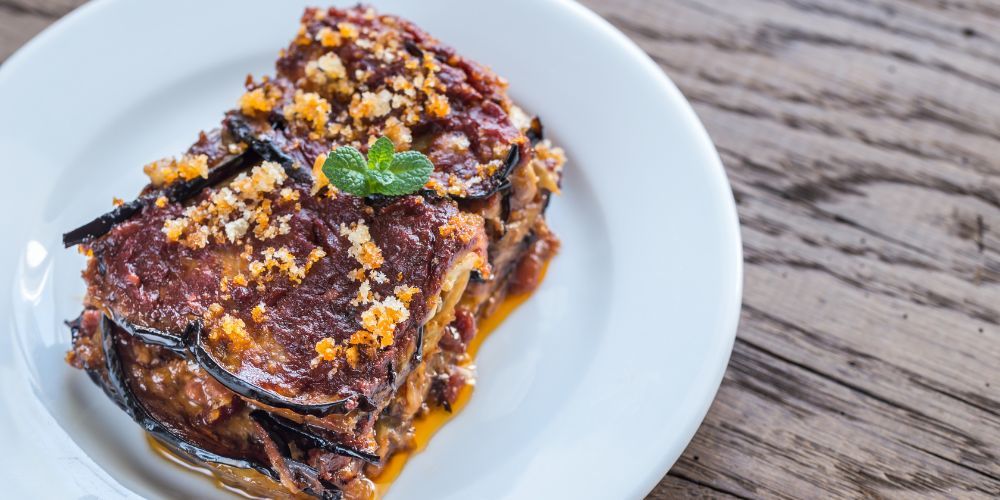
The recipe for eggplant parmigiana admits many variations, depending on regional traditions or personal preferences. Having said that it emerges from the traditions of Sicily and Naples, here are some additional examples.
Parmigiana Bianca. This variation is very simple. If you don’t like tomato or are intolerant, you can also enjoy it without tomato sauce, for a more delicate flavor.
With added meat. There are some variations that include layers of cooked ham or sausage to make it a richer dish. As you can imagine you can enrich your Parmigiana with the layers you prefer, always remember to ask your guests their tastes!
Vegan. There is the version without animal food. In fact, replacing mozzarella and parmesan with vegan alternatives, such as other types of vegetables, and using baking or grilling for eggplant instead of frying, you will still get a tasty dish.
Eggplant Parmigiana is not just a dish: it is a journey through the history, culture and taste of the Mediterranean, a true emblem of Italian cuisine that continues to delight the palates of the world.
About the author
Written on 14/05/2024


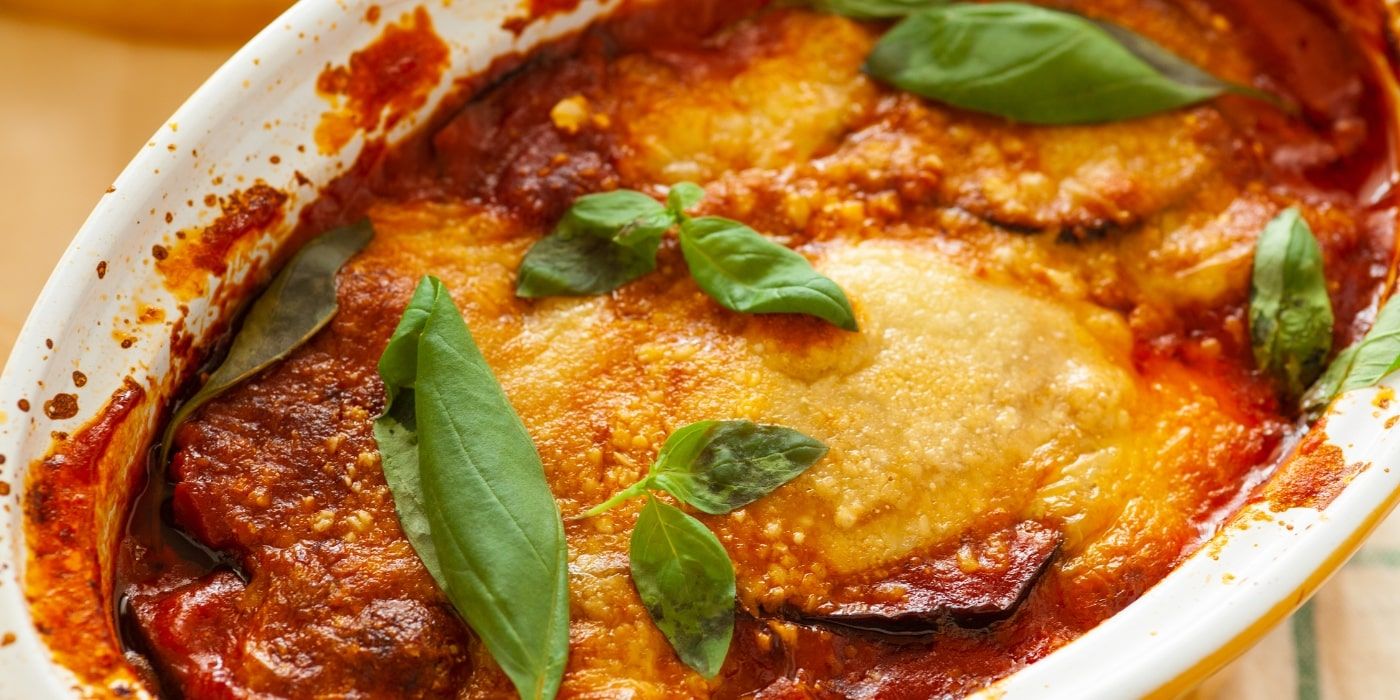
Lorenzo Braccini
One of the typical dishes of traditional Italian cuisine is definitely eggplant parmigiana. Let’s see how to prepare the recipe step by step.